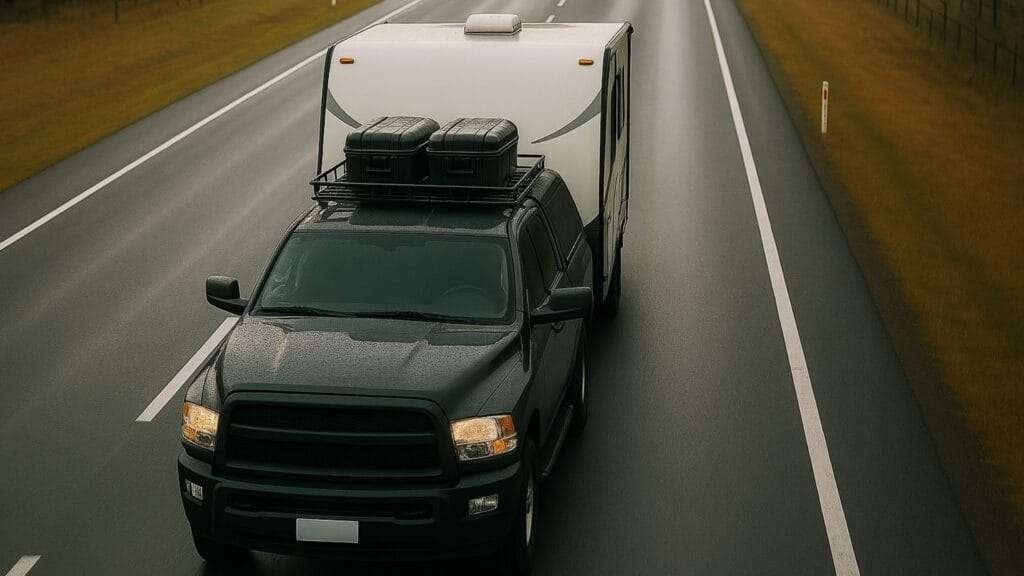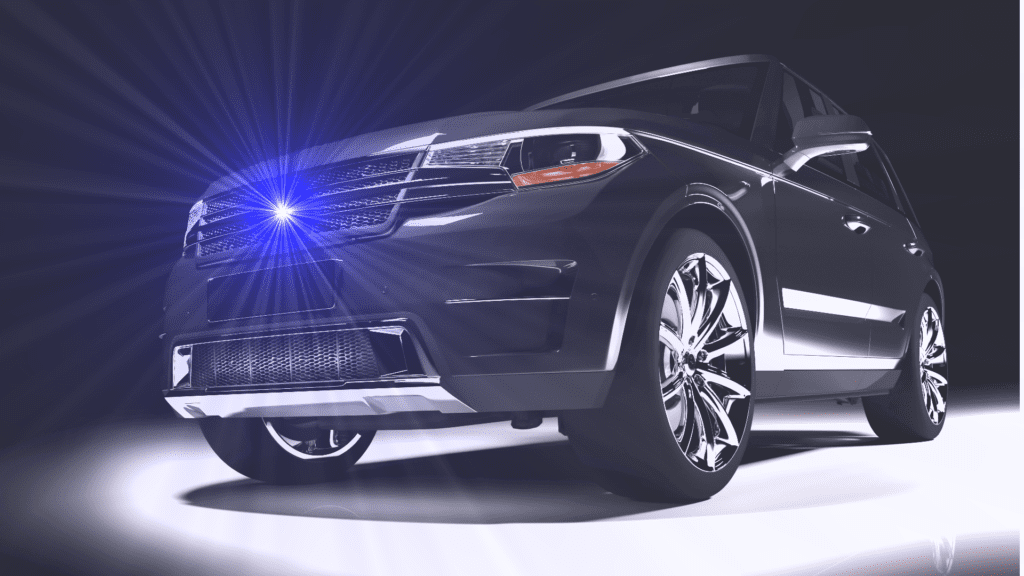Disclaimer:
This article is intended for general
informational and educational purposes only. It does not constitute legal,
regulatory, or professional advice.
The views expressed are those of the author and are presented to encourage public discussion around caravan towing safety.
Readers should consult relevant authorities or accredited training providers before making decisions related to towing practices or licensing.
Should Australia Introduce Mandatory Caravan Towing Licences?
In Australia, caravanning is not just a pastime, it’s a way of life for many of us. However, the regulatory framework governing caravan towing reveals an unsettling gap: drivers can operate vehicle-caravan combinations weighing over 7 tonnes with only a standard car licence.
This is especially concerning when these rigs are comparable in weight and complexity to commercial vehicles that require intensive training.
This article examines the case for mandatory caravan towing licences, proposes a comprehensive training framework, and explores the broader implications for road safety, industry practices, and caravan owners alike.
1. The Scenario: Towing a 9.5-Metre Caravan.
Imagine a family of four setting out on an adventure with their Regular Cab Ford F-250, fully loaded at approximately 3,800 kg and measuring about 5.89 meters (just over 19 feet) is towing a New Age Manta Ray 26OB caravan.
The caravan itself weighs around 3,280 kg and stretches about 9.5 meters (roughly 31 feet) in length.
Combined, this arrangement extends to approximately 16 meters (around 53 feet) and tips the scales at nearly 7,080 kg.
Despite these substantial dimensions and weight, which surpasses that of many medium-duty trucks, a standard Class C licence is all you need.
In stark contrast, professional drivers hauling 40-foot semi-trailers are required to obtain a Heavy Rigid (HR) or Heavy Combination (HC) licence through rigorous training.
This regulatory inconsistency surely poses safety concerns on our roads.
2.0 The Unique Challenges of Towing Large Caravan Setups.
Towing large caravan rigs introduces specific challenges that underscore the need for specialized training beyond that provided for standard licence holders.
2.1 The Impact of Extended Length.
A driving/towing arrangement that extends to around 15.85 meters creates significant manoeuvring challenges.
Navigating tight turns, executing lane changes, and negotiating narrow roads become increasingly complex when managing an extended combination.
A lengthy caravan tends to “cut in” on corners, necessitating anticipatory steering adjustments to prevent collisions.
Moreover, limited rear visibility, especially while reversing or in dense traffic, compounds these risks.
In windy conditions, the extra length makes rigs more prone to swaying, which heightens the danger of instability or even rollovers.
2.2 The Implications of Greater Weight.
Operating a rig with a combined weight of approximately 7,080 kg fundamentally alters vehicle dynamics.
Higher mass results in longer stopping distances and slower acceleration and deceleration factors that can be critical during highway merging or sudden stops.
The extra load also places considerable strain on tires and the suspension system, increasing the potential for mechanical failures if the vehicle isn’t maintained meticulously.
Therefore, heavier rigs demand a higher level of driver awareness and skill to ensure safe operation.
2.3 Hence The Need to Consider Mandatory Caravan Towing Licences.
The challenges posed by increased length and weight reveal a clear need for an enhanced licensing system.
Studies in road safety consistently demonstrate that additional training correlates with reduced accident rates in situations requiring fine vehicle handling and decision-making under stress.
Introducing mandatory caravan towing licences would ensure that drivers of heavy rigs receive training similar to that required for commercial vehicles.
Beyond reducing accidents, such training would provide a heightened sense of responsibility among caravan enthusiasts, ultimately aligning recreational caravanning standards with those governing professional heavy vehicle operations.
Key Points Surrounding Towing Such Heavy & Long Combinations:
· Dramatically increased stopping distances.
· Critical need for sway control with long caravans.
· Difficulty executing emergency manoeuvres.
· Dramatic changes in handling, especially in adverse weather.
2. Why Isn’t There a Special Licence for Large Caravans?
Australia’s towing laws focus mainly on weight limits (Gross Vehicle Mass and Gross Combination Mass), not driver competency. While some states require tests for very heavy combinations, most recreational caravan towers face no such requirements-even when towing rigs over 9 metres long.
Vehicle Combination | Licence Required | Mandatory Training? |
Ford F-250 + 9.5m Caravan (7t+) | Standard Car (Class C) | No |
Prime Mover + 40ft Trailer | HR or HC | Yes (Certified) |
This regulatory gap puts not only caravan owners at risk but also endangers other road users.
3. The Case for Mandatory Caravan Towing Courses
Countries like Germany and the UK require additional testing and licensing for towing heavy or long trailers. Australia should consider a similar approach:
· Introduce a new licence category (e.g., “Caravan Endorsement”) for rigs over 7m or 4,500kg
· Compulsory practical training covering essential skills
· Stricter enforcement of weight and length limits
What Should a Comprehensive Caravan Towing Safety Course Include?
· Module 1: Vehicle Dynamics and Physics.
o Weight distribution, centre of gravity, braking distances
o Stability and handling with varying caravan sizes
· Module 2: Emergency Tyre Management.
o Safe handling and replacement of flat tyres on both vehicle and caravan
o Preventative maintenance to reduce blowout risks
· Module 3: Recovery Techniques.
o Assessing bogging risks, effective recovery methods, prevention strategies
· Module 4: Coupling and Breakaway Safety.
o Understanding breakaway systems, coupling failures, emergency procedures
· Module 5: Advanced Towing Techniques.
o Navigating tight spaces, adapting to different terrains, speed and braking management
· Module 6: Emergency Preparedness.
o Assembling emergency kits, hazard identification, practical exercises
4. Surviving Remote Breakdowns Without Mobile Coverage.
Travel in remote Australia demands special preparation. Training should cover:
· Staying with your vehicle for visibility and shelter
· Using emergency communication (PLBs, satellite phones, HF radio)
· Creating visibility with reflective materials
· Carrying essential survival supplies and self-recovery gear
· Managing resources like water, food, and battery power
5. Why Is Training So Important?
Proper training would significantly improve caravan towing safety. It builds driver confidence, reduces accident risks, and ensures only adequately prepared individuals tow heavy caravans. A formal licence endorsement could prevent serious accidents and save lives.
6. The Evidence: Caravan Accidents and Economic Costs.
While comprehensive national statistics on caravan-specific accidents are limited, the Australian Transport Safety Bureau (ATSB) reports that heavy vehicle crashes, including those involving large trailers, contribute significantly to road trauma. Media reports frequently highlight caravan-related incidents linked to driver inexperience or loss of control, such as a 2023 Bruce Highway crash involving caravan sway and a multi-vehicle collision.
Caravan accidents also impose economic costs-emergency response, healthcare, road repairs, and higher insurance premiums.
Improved data collection is needed, but the risks are clear: without proper training, heavy caravans remain a growing hazard.
7. Addressing Caravan Owners’ Concerns.
Some caravan owners may worry about added costs or inconvenience. However, the benefits-safer roads, greater driver confidence and potentially lower insurance premiums-outweigh these challenges.
State/Territory Governments or possibly the Federal Government could consider offering subsidies or tiered fees to ensure accessibility, similar to existing driver education programs.
8. The Role of the Caravan Industry.
The caravan industry-including manufacturers, dealers, and organizations like the Caravan Industry Association of Australia-can play a vital role by:
· Partnering with training providers to develop standardized courses.
· Offering introductory towing workshops for buyers.
· Integrating advanced safety features (e.g., trailer sway control) into new models.
· Advocating for regulatory change to enhance road safety.
9. Implementing the Caravan Endorsement.
Australia could leverage existing licensing infrastructure. State road authorities could administer a new “Caravan Endorsement” for rigs over 7m or 4,500kg, with training delivered by accredited providers.
A phased rollout-starting with voluntary certification-would ease the transition. Estimated training costs ($500–$1,000 per driver) could be offset by subsidies or tax incentives.
10. Aligning with National Road Safety Goals.
Mandatory caravan towing licences align with the National Road Safety Strategy 2021–2030, which aims to reduce road deaths and serious injuries.
Heavy caravans pose unique risks to vulnerable road users, such as cyclists and motorcyclists, especially on narrow rural roads. Specialized training would address this gap and enhance safety for all.
11. Adapting to Emerging Technologies.
Caravanning is evolving with technology. Electric vehicles (EVs) like the Tesla Cybertruck introduce new towing dynamics, including battery range management and regenerative braking.
Training programs should include EV towing modules. Advanced safety technologies-such as trailer sway mitigation and electronic stability control-should be prioritized and incentivized.
12. Inclusivity for Diverse Communities.
Caravanning is popular in remote and Indigenous communities, where risks are amplified. Training must be accessible through mobile units, culturally sensitive materials, and affordable pricing.
Older drivers (“grey nomads”) represent a significant demographic; courses should address age-related factors like reaction times and fatigue.
What Can You Do Now?
Until regulations evolve, caravan owners should:
· Complete voluntary towing courses through recognized organizations
· Practice manoeuvres in controlled environments
· Verify tow ratings, weight distributions, and brake systems before departure
· Invest in advanced safety equipment, such as electronic stability control
Conclusion.
As caravans grow in size and weight, Australia’s licensing system must evolve. A 9.5-metre caravan demands respect-and proper training. Should we wait for tragedy before making change?
Q. Should Australia introduce mandatory caravan towing licences?
Share your thoughts below.
Further Resources
· Caravan Council of Australia – Towing Safety Guidelines.
· State Road Authority Towing Regulations.
· Australian Caravan Club Safety Resources.
· Professional Towing Courses Available Nationwide.








